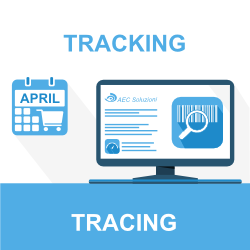Tracking and tracing:
two sides of the same coin
Traceability, as well as being a legal requirement in certain sectors, is a valuable support for companies operating in the manufacturing sector as it enables them to manage efficiently and transparent the entire production chain.
Usually the term tracking and tracing are used interchangeably, but in fact they refer to two different and complementary processes. In fact tracking is the ability to describe the path of a raw material or a lot of production within the production chain by acquiring information at each step made. Tracing instead is the ability to reconstruct back the entire history of a product: from its final state until the raw materials used.
The first trial, in practice, it can identify operational structures involved, activities, treatments and steps that need to be documented in order to monitor the progress of the product; the second one allows, for each finished product, to identify the responsibilities of all those involved in the supply chain tracing back the recorded history.
A careful policy of tracking and tracing of all resources in the company (raw materials, finished products, equipment, machines...) allows enterprises to support production rates imposed by the market giving customers high quality standards.
Companies therefore require a traceability system capable of:
- recording incoming raw materials by associating each of them an identification code (ID batch)which date back quickly when they occur non-conformities;
- monitoring the processes of transformation of raw materials in order to know the progress of production and identify any anomalies in the process;
- controlling the quality of semi-finished output. In this case, the system imports the data relating to the control method adopted, control tools and dates during which such procedures have been carried out in order to ensure the backward path (traceability) and the possibility of identifying the cause of a non-compliance.
In order to optimize and update data acquisition and correction it becomes imperative for companies to make use of innovative software applications for tracking. The adoption of computerized means allows to build a traceability system capable of:
- associate with each batch of raw material date of acceptance, the checks of quality and information related to the supplier of a centralized database so that you can automatically rebuild the history of each product made by quickly restoring the necessary information;
- know the exact location of the resources present in the company (raw materials, finished products, components for assembly, equipment, machinery...);
- get a lot of full and detailed traceability maintaining a constant link between raw materials, components and semi-finished products;
- document the progress of production by acquiring the related process data (dates of start / end process, the individuals involved, machinery and equipment used, process parameters...) and production (quantities produced, discarded, suspended and recovered...);
- view freshmen produced and completed orders using specific lots of materials and / or specific serial;
- acquire data via automatic executions of statements by reading barcodes, RFID tags, NFC tags or magnetic badges.


